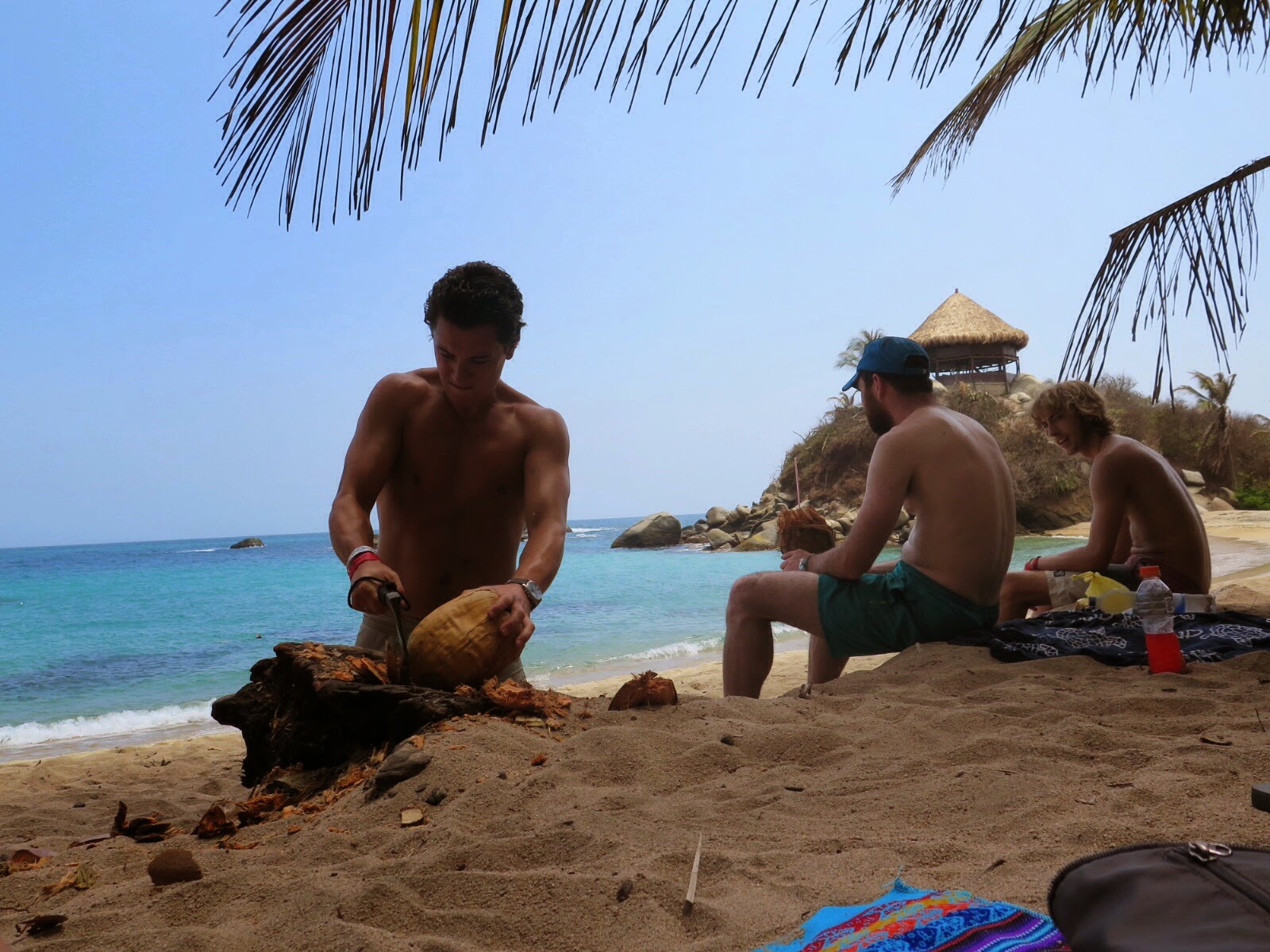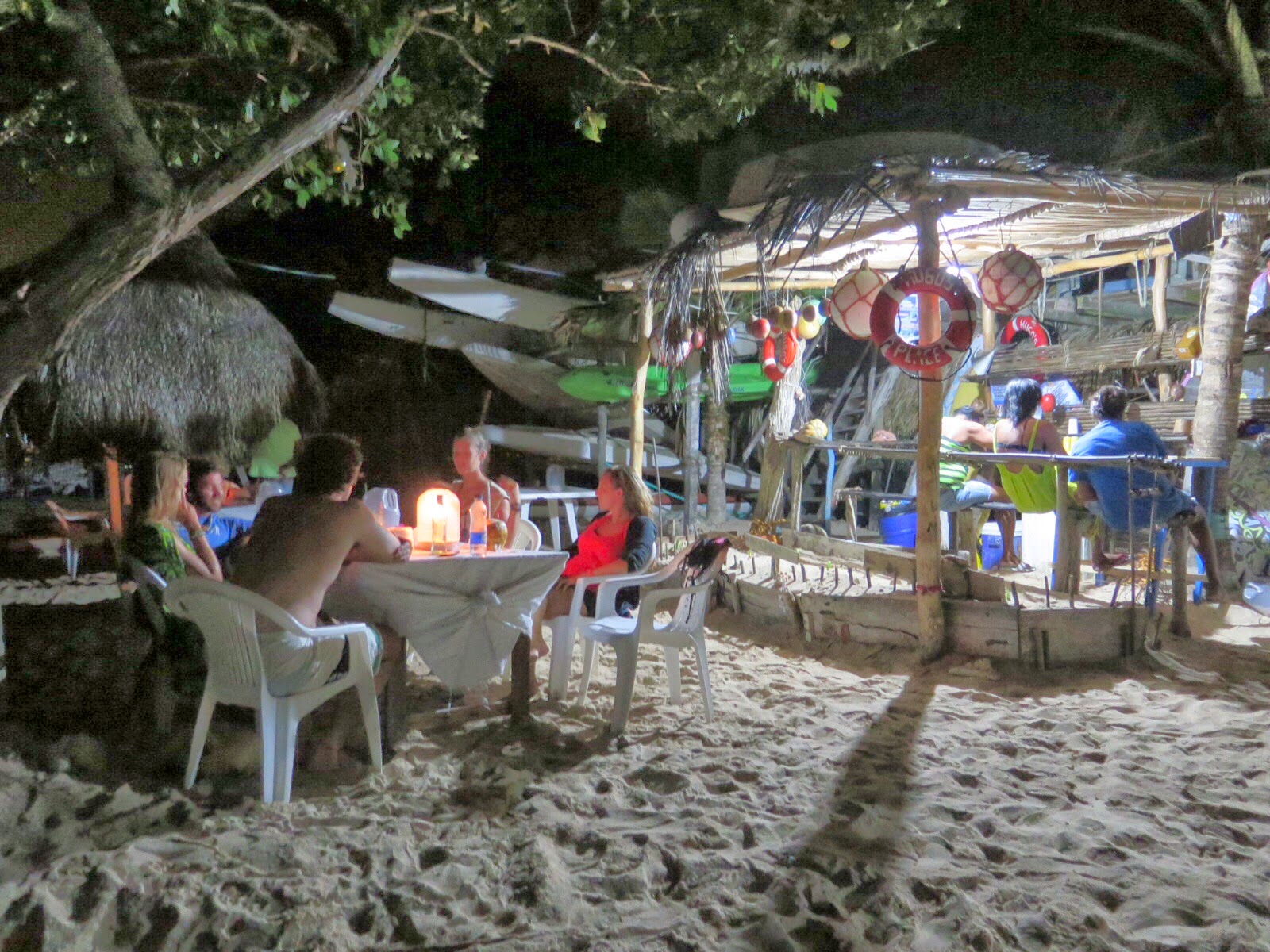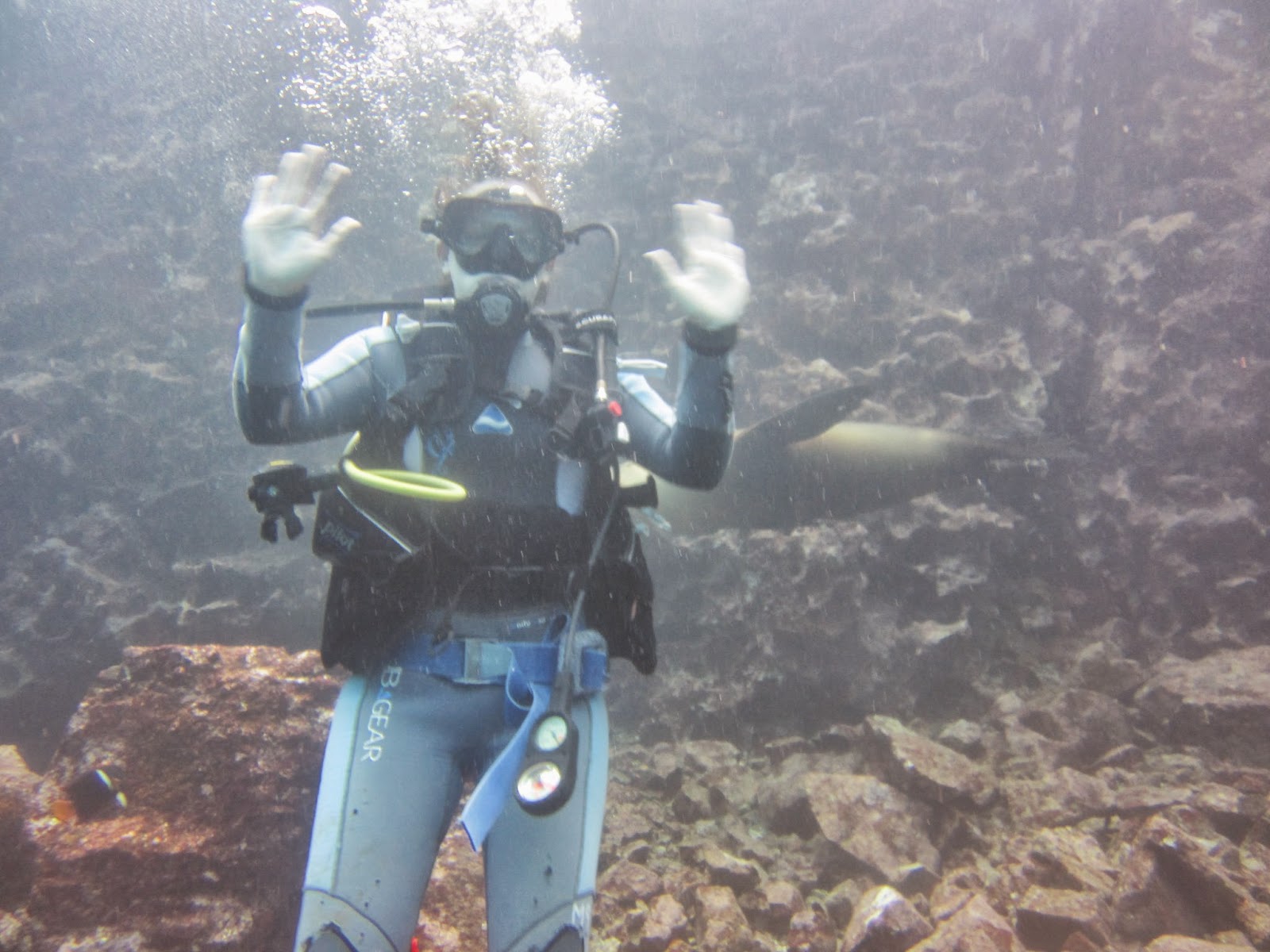 |
| Cabo San Juan del Guia in Tayrona National Park |
Life is all about Perception ~ the way you think about or understand someone or something. Unfortunately, life's perceptions about people and places rarely uncover the truth. Colombia is a place that many people perceive to be unsafe, as it played the backdrop for one of the world's most notorious gangsters, Pablo Escobar.
Fortunately, for Jess and I, we had two good friends visit Colombia last year. The stories they told were quite the opposite from the U.S.'s general perception of Colombia. We too found a beautiful country rich in diverse landscapes and filled with locals eager to show you all that their country had to offer. Yes, you could still see a country seeking stability and economic identity. However, the people do not lack in flavor and personal identity.
We flew from Quito, Ecuador to the capital of Colombia, Bogota. When we arrived to the airport they explained you need to have proof of an exit flight/bus. Although we heard rumors of this policy, I was unable to find any hard evidence that backed this up. Again, this is a country who are adjusting to an increase in tourism, which has only been happening the last 8 years or so (based on what locals told us). After some discussing, I decided to book our flight home for April 8th, much to the disappointment of my co-pilot. There's no good time to end a trip like this, but I felt three months traveling was more than most experience.
 After three low key days sightseeing in Bogota and a final supper with our friends from U.K., we headed to Salento in Columbia's Coffee Region. When I moved to San Francisco back in 2009, I wasn't a coffee drinker. As someone who typically had too much energy I didn't see the need/allure. However, after a year in San Francisco, I instantly transformed into a coffee snob. Although not well educated in coffee, I'm always looking for the best of the best. Salento delivers just that and finally provided me the educating that I needed to move up levels in coffee snobbery.
After three low key days sightseeing in Bogota and a final supper with our friends from U.K., we headed to Salento in Columbia's Coffee Region. When I moved to San Francisco back in 2009, I wasn't a coffee drinker. As someone who typically had too much energy I didn't see the need/allure. However, after a year in San Francisco, I instantly transformed into a coffee snob. Although not well educated in coffee, I'm always looking for the best of the best. Salento delivers just that and finally provided me the educating that I needed to move up levels in coffee snobbery. Jess isn't a coffee drinker, but was also impressed by the rolling green hills of the region and welcoming town/people. It's quite the experience to see where some of the world's best coffee that fuels America comes from. Meeting the humble people who
.JPG) |
| If Juan Valdez was real, this would be him. |
With the help of a bus full of locals who directed us to a bus stop not clearly marked on the side of a highway, we moved onto Medellin. Once the world’s my dangerous city thanks to Pablo’s Medellin Cartel, Medellin was voted Most Innovative City by Urban Land Institute in 2013. The Metro system here is a big reason for the honor and we were able to take it to a National Park within the city limits. Pretty impressive considering where this city was just 20 years ago.
With time ticking away, we made our way to Santa Marta, along the coast. We figured, ending our trip on the beach was the best use of our time. Colombia’s interior is impressive with plenty of options, but the both of us were born to lay on the beach, so that’s the direction we headed. Throughout our trip we had heard Taganga mentioned several times as a cool beach town to stop off at before heading to Tayrona National Park. My initial thought to this town on the coast was, “I could definitely see this place in a modern day pirate movie”.
Once we arrived to our hostel, we found that was somewhat the case. Like most coastal towns, Taganga has attracted not only backpackers, but drifters in desperate times. He advised not hiking a certain trail that takes you to a beach right outside of town unless with a group. The beach in town looked polluted, so we opted to hike the trail during the day while a handful of people were on the trail. We found the trail covered in trash like I’ve never seen. It was extremely disappointing that we had rushed to the coast only to find a beach that while somewhat remote, was covered in garbage.
Once again, Galapagos had set the bar too high for us and we were still experiencing the Galapagos Hangover. Thankfully, we weren’t harmed and only spent a short period of time at this beach that resembled a lake in Bridgeport, Connecticut. Looking back, it's places like Taganga that make you appreciate others. From there we booked a bus to Tayrona National Park where we planned to spend one night. It looked like a short hike to a beach and I was just excited to get out of Taganga.
Luckily, Tayrona didn’t disappoint and after a two hour hike through the jungle, we made it to a remote beach called Cabo San Juan. After months of dragging around my tent, I was excited to set it up again and for the first time since Patagonia. We brought snacks, but were happy
to find the restaurant served reasonably priced food and drinks. This is why I rushed to the coast and I was happy to experience my first real Caribbean beach.
 |
| Coconut Hunter |
A night of humid camping later and we hiked back out to meet our bus back to Taganga. Luckily we again stayed at Hotel Casa D’mere, which was the one highlight of that shit hole of a town. The unsung heroes of this trip have been the hostel staff that have helped us along the way. They have answered thousands of our questions and often filled in the gaps we had in our plans. The guy who worked at HCD was one of the more patient we’ve come across and made us feel comfortable in a town that you otherwise wouldn’t.
 |
| Historical Cartagena |
Our final stop would be Cartagena before heading home to Connecticut. Our friends and fellow travelers had spoke highly of this historical port. We would also meet back up with Billy who has had his own adventure over the last few weeks. The bus dropped us off outside the city walls. Growing up you read about ancient cities with city walls to protect the towns/cities, but I never realized they still existed here in the Americas. This place has a lot to offer with history and architecture that reminds me a bit of New Orleans.
 |
| Playa Blanca at Night |
Although on the coast, Cartagena doesn't really have desirable beaches, so we made our way to Playa Blanca by bus, ferry and motorcycle taxi. We brought our tent, but quickly found a spot that had bungalows for only $15,000 pesos(about $7.50USD). The water, like Cabo San Juan was a crystal clear blue, but the beaches weren't as remote and lacked in tranquility. Luckily we had a good crew and the beers were cold. Goes to show that it's not where you are, but the company you're with. After two days on the beach we packed onto a ferry (that reminded me I was in a 3rd world country) and slowly made our way back to Cartagena.
I planned this trip this time of year for two reasons 1.) to visit Patagonia in January 2.) to avoid the Winter back in the States. Mission Accomplished on those two fronts and if there were a way to do that every Winter, I'll definitely look to make that happen in the future. We've been to five countries and have seen the many varying landscapes of South America, but not all. The last three months have been a non-stop adventure, and it'll be good to go home and reflect on our journey with family and friends.
Thanks again for all the support and suggestions over the last 3 months from our family and friends. A special thanks to my co-pilot for putting up with my military style of marching through countries like we were on a mission from god. We've learned a lot and have definitely been humbled along the way. Hopefully our trip will inspire others to let go for a few months and go see the world we live in. It's 2014 and there's no better time to go experience the cultures that exist in/out of your home than TODAY.
 |
| Night shot from Playa Blanca |







.JPG)

.JPG)


































.JPG)

